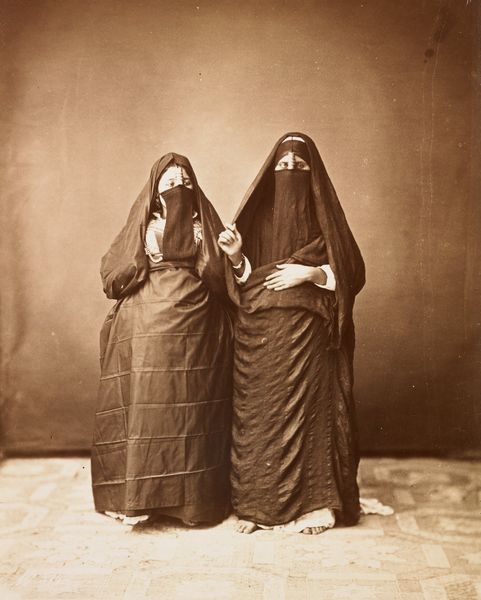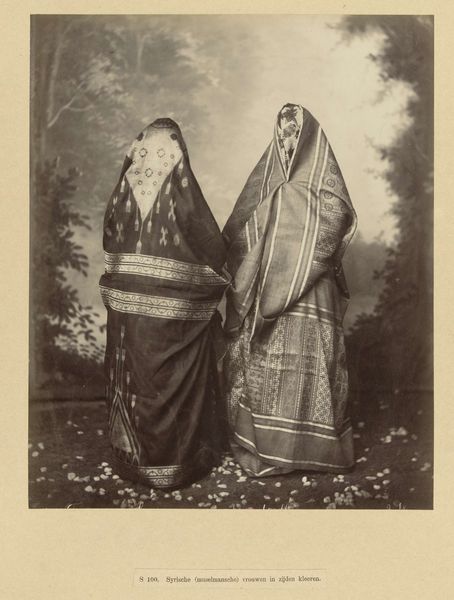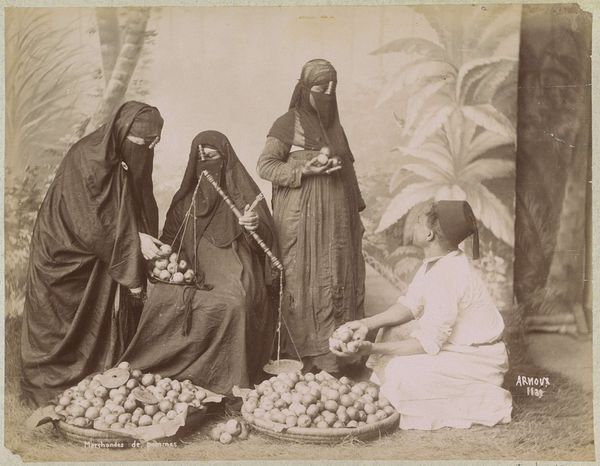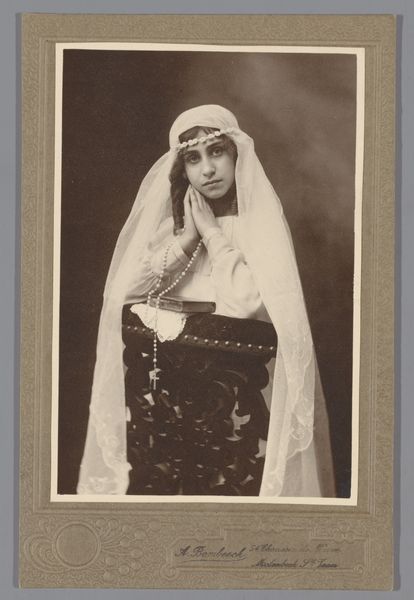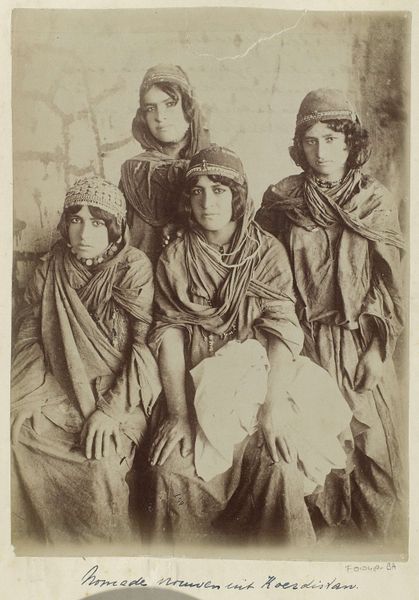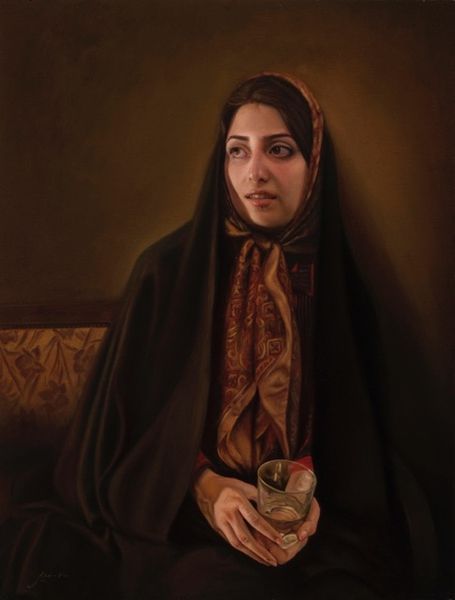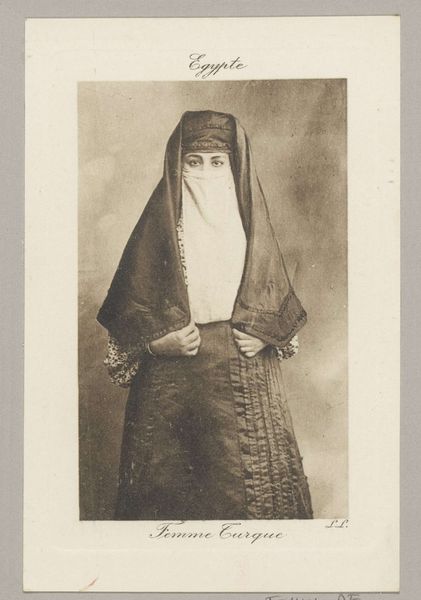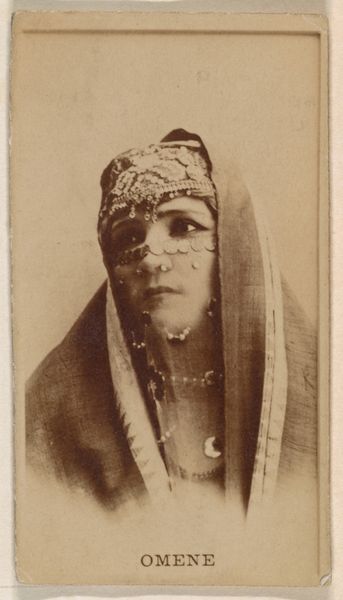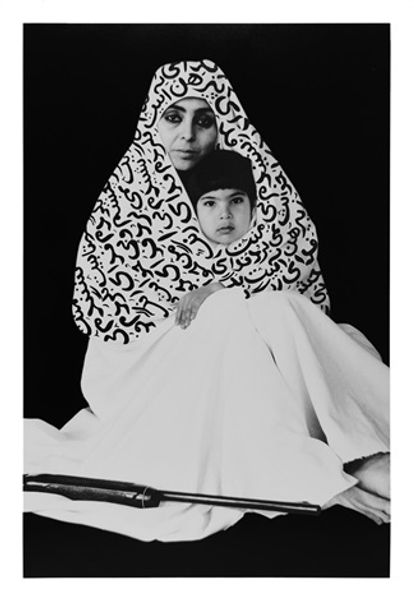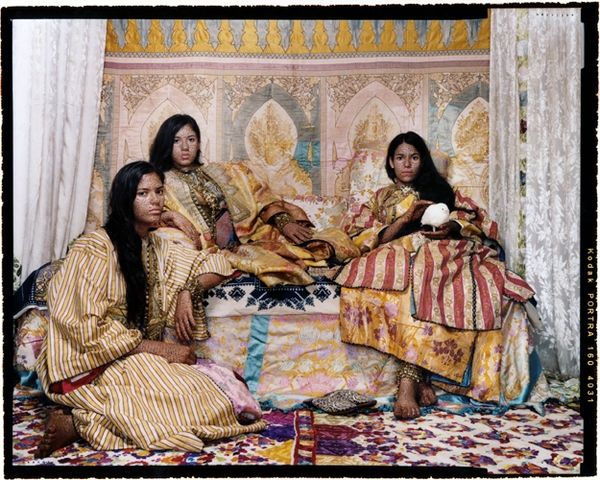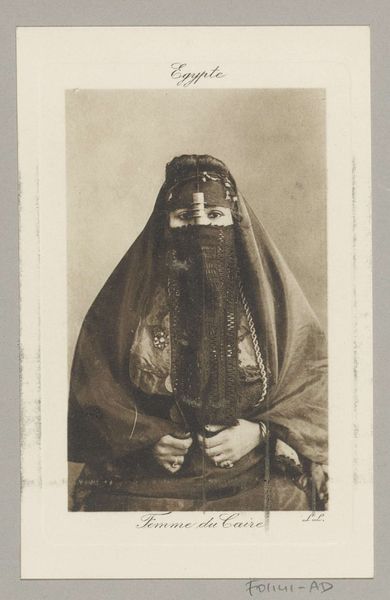
Copyright: Shadi Ghadirian,Fair Use
Curator: Here we have Shadi Ghadirian's "Qajar #8" from 1998, a striking mixed-media photograph rendered in monochrome. Editor: It feels simultaneously old and very modern. There’s a quiet formality but also a sense of deliberate staging...almost performative. Curator: Absolutely. Ghadirian's series directly engages with the complex negotiations of Iranian women's identities post-revolution. This photograph draws on the visual language of 19th-century Qajar portraiture, a style known for its romantic depictions, yet it subverts those traditions. Editor: The way they’re framed, their poses... It brings to mind historical archetypes, yet the small modern objects – almost hidden— resonate powerfully. The figure on the left seems to be applying kohl or perfume and the other lady with a mirror both appearing contemplative. Those mirrors and fragrances—aren’t they traditional symbols? Curator: Exactly! It highlights the tensions women experience between tradition and modernity, public and private. Consider the historical context: After the Iranian Revolution, women were encouraged to embrace modest Islamic dress, which impacted both their roles and self-expression. Ghadirian is interrogating how women find their voices within the constraints imposed by religion, culture, and patriarchal systems. Editor: The deliberate ambiguity, that dance between past and present. Are the women embracing or rejecting tradition? Is there strength or resignation in those stares? I like how the mirror becomes more than vanity. Curator: The women in the photo are not passive subjects but active participants, asserting their own identities in spaces that seek to limit them. Even the backgrounds of painted portraits suggest something that may have been once imagined. Editor: It’s more than a picture, but more than just the women. This feels more symbolic of culture shifts with the individual's personal perspective placed within these big changes. Curator: By placing contemporary objects in a Qajar-era framework, she’s starting a conversation about continuity, resistance, and the enduring presence of women within Iranian society, inviting the viewers to interpret this history of conflict and finding an individual, cultural agency. Editor: Looking at this photograph again makes you think how individual identity changes within bigger power narratives, something we're always balancing in our society, even now. Curator: Ghadirian offers a nuanced vision, reminding us that history is never fixed, always open to reinterpretation through the lens of lived experience.
Comments
No comments
Be the first to comment and join the conversation on the ultimate creative platform.
